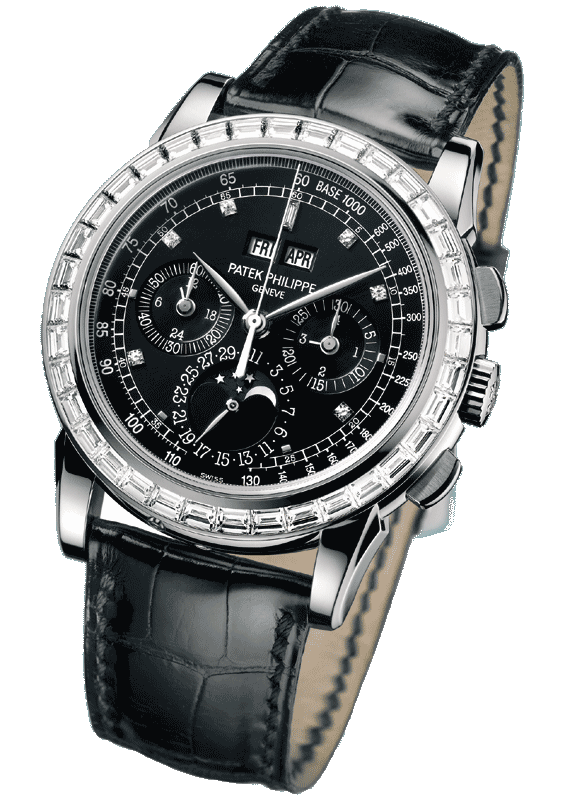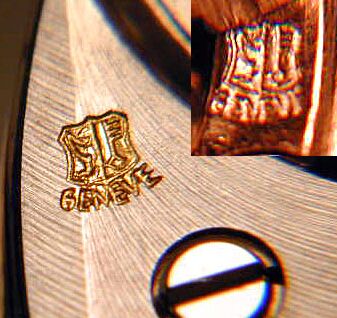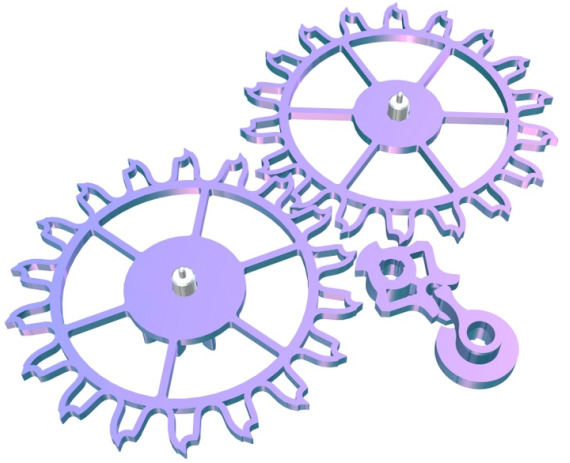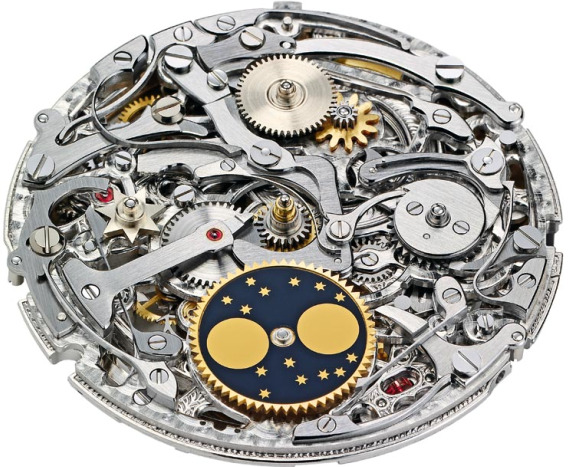
For $20,000 and up watches:
A large population of the high-end luxury watch buyers know precisely what they are getting into with each new acquisition. Years of being a watch lover has allowed them to appreciate “must-have” novelties, as well as the desirability of traditional items. Years of study are required before fully understanding what goes into the value of a high-end luxury purchases ($20,000, and up, and way way up). This helps create an understanding of those watches which are worth their high cost in terms of value, and those that, while expensive, are a mere emotional purchase with less than stellar post-purchase value. Watches near the apogee of the luxury world that you should want to have, tend to share various desirable traits. Taken together, you should consider these factors in your ultra high-end watch purchase decision making process. In this third and final segment of the “top things to look for in a luxury watch,” you should take these items together with those in the past two articles as much as is logically possible. When spending “mucho dinero” on a watch, consider the following:
1. Precious Metal Construction
It should go without saying that a high-end expensive watch should be constructed from quality materials. This means the best possible metals and so forth, but it is also a good idea to ensure that the metals involved are inherently valuable. Take, for instance, a luxury watch that is 18k gold versus titanium. Which one is going to have more value in the abstract? Not only that, but it is a good idea to investigate how much precious metals are used. Parts of the case? All of the case? Are the hands and hour markers gold? When talking about watches at $20,000 and up, you should expect to see a fair amount of precious metal used in the construction and execution of the watch. The most common metals are of course the various colors of gold (yellow, rose, pink, red, white, etc…) as well as platinum. Silver is rarely used for cases, and a bit more commonly used for traditional looking watch dials. It also goes without saying that precious stones also are a desirable component, given the style and variety of the watch.
2. Natural, Quality Jewels
As I just mentioned, if you are purchasing a watch with precious jewels you want to take a close look at them. The first thing to look at is the origin of the stones. The two major options are natural or manufactured. Natural stones are obtained in the traditional manner – via often controversial mining methods. There is an inherent romance to the concept that a stone was derived from the earth, discovered, cut and polished, and then used on your luxury item. Aside from “recycled stones” (taken from older or unsold items), the alternative to natural stones are manufactured stones. These are not synthetic stones, but real stones that have been grown in a lab. So real stones, not naturally made. Probably, the most popular synthetic stones in watches are sapphires (that come in many colors now and of course make up your luxury watch crystal), diamonds to a degree, and many other types of stones (or other non-stone materials such as mother-of-pearl that is grown mostly and not harvested anymore). Of course, the most valuable stones are natural ones.
You, then, want to look at the quality and amount of the stones. A few very clear stones with good color are going to be worth more than a large array of cheaper stones. Take a good look at the color of the stones and the size of each. Ask for the total carat amount and where the stones came from. Generally, those watch companies with well-established jewelry making arms are going to have the best types of stones utilized in their high-end luxury timepieces. You don’t need precious jewels to make a high-end luxury watch, but if you want them, do your homework.
3. Manufacture-Made Movement
Most watch companies in the world do not make their own movements. They source movements from various movement suppliers. The most well-known European watch movement maker is ETA, and is part of the large Swatch Group. Some companies purchase movements and use them as is, and other times, they modify or add to movements (modules) making them more unique and complex. This also involves various types of decoration that a watch maker might include on a movement. The best watch makers design and construct their own movements in-house – even if they don’t make other components of the watches. You’ll find that the top houses such as Patek Philippe, Audemars Piguet, Jaeger-LeCoultre, A. Lange & Sohne, among others each make their own movements.
Having an exclusive movement made by the watch brand almost always ensures a high level of decoration in a beautifully made, and sometimes very complex watch movement. You’ll know that few timepieces have the same movement, and you can be part of the exclusive club of people who have timepieces with “in-house manufacture made movements” (bragging + snob rights).

4. Seal Of Geneva
This seal is a certification of quality and origin. The seal is applied directly on the movements of specific watches that satisfy the stringent rules as applied by Swiss law. The Seal of Geneva is placed on certain watches that have movements which are mostly created and assembled within the canton of Geneva in Switzerland. The movements must also have various technical and decoration requirements in addition to their place of origin. Only a handful of watch makers have movements with the Seal, and it is very hard to get. Just because a watch does not have the Seal does not make it bad, but those that do boast the Seal of Geneva are most always impressive high luxury timepieces.
Learn more about the Seal of Geneva here.
5. Exotic Materials
Do you ever get bored of all the mainstream metal luxury watches? Apparently some watch makers do. The last few years have seen an impressive number of luxury timepieces being released that make use of interesting materials in the case construction as well as the movement. These materials range from unique alloys exclusive to particular watch makers, to exotic compounds you’ve never heard of, as well as innovative ways of using materials that were not previously used for watches. In an ongoing effort to differentiate themselves, watch makers have gone to great lengths to use exotic materials for watch making – sometimes even improving a watch in doing so.
For example, something called silicium is being used in some watch movements by companies such as Patek Philippe and Ulysse Nardin. The exotic material does not require lubrication and thus helps the longevity and accuracy of a watch movement. On the outside, you have ceramics used that are very hard and much tougher than metal to scratch. Exotic materials used on the outside of a high-end luxury watch can vary widely. It is, of course, common to see steel, gold, titanium, and various styles of leather. These days you also have materials such as rubber, forged carbon, carbon fiber, composite resin (basically, fancy plastic), natural stones, complexly shaped sapphire crystals, ceramic compounds, and many more. The bottom line is that with a world of interesting materials, you can appreciate unique applications of some of them inside or outside a timepiece when your focus is on the very high-end of timepieces.

6. Many Hours Of Hand Construction And Assembly
A question you should always present to a watch retailer is, “how long does it takes to make this watch?” They should know the answer, and be proud of it – even though it is a number of months. High-end watches are handmade and assembled by master watch makers. Sometimes a team of people will be involved in making the watch, other times a single watch maker toils for as long as a year or more on a single watch. As each part needs to be fabricated, decorated, assembled, and tested, you can image that the process takes a long time. The longer it takes to make a watch, the more refinement and decoration will be found in an on it. There is no specific amount of time that you should look for as it depends on the company. Rolex, for example, uses complex robotics and departments to make watches – even though their most expensive watches have jewelers who hand set gems. Rolex can take just a few days to make a watch, while a less industrialized brand can take several months.
7. Complications
High-end watches don’t just have beautiful mechanical movements, they have complex movements. A watch costing in excess of $20,000 should often do more than just tell the time, or it should tell the time in a special way. Other complications effect how accurate a watch is or how interesting the movement is to look at while in operation (for example, various types of tourbillon escapements). Other common complications in high end watches are perpetual calendars, rattrapante chronographs, sonneries, fusee and chains, moon phases, and multiple time zones along with world timers. Be cognizant of what complications the watch you are looking at has. When looking at higher-end watches you might want to ensure that the complications you are interested in aren’t available at lower prices to help secure the value of your purchase decision.

8. Highly Refined Designer Looks
A high-end watch should be beautiful. It should have a large amount of time and effort invested in the design, meaning that the beauty of the watch should not wear off like the novelty and relevance of a new computer. The best watch makers are skilled in making unique designs, but also ones that are “instant classics.” You have to have a good eye to spot the best, but there are things you can do to test this out aside from recognizing that a watch has a famous designer. First, look at the watch again after you saw and loved it the first time. Do you still feel good about it the second time? Also, look at a series of other nice watches. Is the watch you like still your favorite when you return to it after seeing other nice watches? Last – and trust me on this one – if you have the watch in front of you, then wear it, and also have someone else wear it. Seeing it on your own wrist is not nearly as good an indicator as seeing it on someone else’s wrist. The best designs will look good on anyone. Lastly, when looking at a designer look, you want to make sure it has enough unique qualities to justify the “exclusive” item you are thinking about buying.
9. Limited Production
The best luxury things in life comes in small quantities and are made in limited productions by dedicated people. Besides, having too much of anything cuts the value and the intrigue. So look for limited edition or highly limited production watches. Ask how many of a particular model have been made and whether or not there are 1000 or 100,000 of them out there. The more limited a watch is, the more exclusive it is, which is a major component of true luxury goods.
10. Investment Grade Acquisition
The lucky high-end luxury watch buyer will be able to afford a timepiece that has the potential to increase in value. On the one hand, there are certain brands that commonly have their most exclusive models increase in value (such as Patek Phillipe and Rolex), but certain other watch models or brands may have this same quality. It is very difficult to gauge whether a watch will increase in value (unless it is a rare Patek Philippe watch that is going to be difficult to get in the first place), but do your best to follow the above guidelines and you might find yourself with an investment grade timepiece. In the end, you aren’t buying a watch for value alone (fashion and function are at issue), but it would be at least nice to know your acquisition retains value.
Top Things To Look For In A Luxury Watch Part 1: Entry Level Luxury
Top Things To Look For In A Luxury Watch Part 2: Medium Range Luxury
